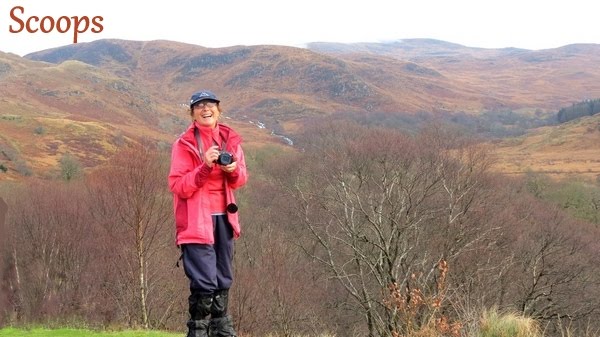Wigtownshire Ramblers
27 August 2011 Cairnsmore of Casphairn
Cath, Frances, Thomas, Isobel, Rachel,
Florence, Jacqui, Linda, Leslie, Jack, Shona, Elizabeth (Derek’s ‘The Alps’
wife), Paul, Sue, Colette (not seen her for ages!) and Brian, who was leading, met
in NS. We drove in convoy through New
Galloway and St. John’s Town of Dalry and Carsphairn, turning off onto the B729
soon afterwards and being joined by Gordon who had come from a different
direction. We came onto a minor road and
parked close to Craigengillan where the farmer came out to talk to us. We thought he was going to move us on but he
said that the logging had finished in the area and we were OK to park
there. He advised us to take the track
up through the forest but Brian had other ideas!
Meeting up at Craigengillan on Saturday morning,
seventeen ramblers prepared for a long day in the hills, climbing Benniner and
Cairnsmore of Carsphairn. The weather looked fair but storm clouds were never
far away and the temperature was alternately warm and cold as the sun went in
and out of the clouds.
Once on the rock strewn
high plateau the going was easy and a short walk to the summit cairn was
achieved with great relief. (However, for
those of us who were trailing the relief was short lived as we only had a short
stop before trying, in vain, to catch up with the others!) Two of the
Striding Arches of Andy Goldsworthy were visible in the distance. These are a
challenging subject for a future walk – erected in 2005, they form a series of
red sandstone arches each with a span of about seven metres, built on the
hilltops around Cairnhead.
A fresh breez
e meant
that the summit of Beninner was forsaken and a late lunch was eaten in the lee
of the hill above the Nick of the Lochans. From here it was a stroll down to a
boundary fence and up onto the top of Cairnsmore of Carsphairn (797m). A big
cairn, separated by a few yards from a shelter, with the Ordinance Survey
pillar, complete with its flush bracket, was the high point of the day. The
views were phenomenal. From the Rhins of the Kells, the Awful Hand of the
Merrick, Ailsa Craig and the sea, the lochs
of Macaterick, Riecawr, Bradan and Doon, Ayr town, then the windmills around
the well named Windy Standard, to the Moniaive hills and even across the Solway
to Skiddaw; it was a 360 degree
panorama.
A ridge walk, followed by a very steep descent,
then again through bogs, tussocks and deep, black peat, booby traps, to the Bow
burn, led to the tidy bothy of Clennoch and a well earned rest whilst the
building was explored.
Near this spot is the crash site of a local man,
David Hunter Blair, who flew a spitfire into this remote hillside in May 1942.
His plane was named ‘Blue Peter’ after a Derby winner. The children’s programme
of the same name sent their presenter, John Lesley, here to record the event in
1997, and the Dumfries and Galloway Aviation group conducted a search of the
area to find the crash remains. There is now a memorial plaque affixed to a
boulder marking the site.
It was now a short walk to a new forest road, not
yet on the maps, which was followed, up and down hill, until once more the cars
were reached by the weary group. The challenge of the long walk had been
appreciated by all.


































